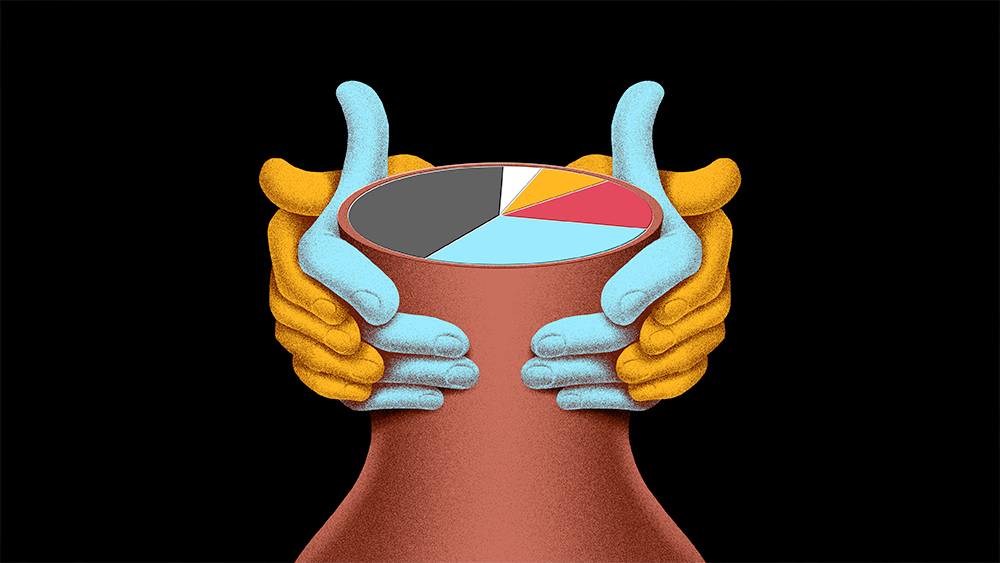“Call Scott”: The Power of Discovery and Co-Creation in Sales
10.8 minutes

Recently, I reconnected with an Account Executive who participated in our Sell by Design™ program 5 years ago. He shared a story about how the design thinking methods he learned then helped him land the biggest licensing deal of the year. Matt’s story powerfully demonstrates how co-creating with customers helps revenue professionals stand apart from the competition and grow larger, more valuable partnerships.
For context: Matt Woodhams is a superstar. Over 9 years, he grew from a junior seller into an Enterprise Account Executive where he oversees a $23M heavy industrial equipment manufacturer account — one that has made a significant investment in digital transformation. Central to its transformation has been its relationship with dealerships. In fact, 25 out of 48 of these dealers in the U.S. have become Matt’s customers, too. This is a story, in Matt’s own words, of how one of the largest dealers became a customer and the process Matt and his team led to land a $14M, multi-year deal.
**
In the beginning, this dealer came to me looking for a small solution for its rental business, which is a typical starting place for a customer: a specific need, for one department. We implemented it, and it was successful. So, we had a small footprint. The opening to a larger conversation came when there was massive, once-in-a-generation, shift in family leadership. New, younger leaders were looking at the next 20-30 years. They saw what was already occurring in their industry, and they hired a CIO to focus on digital transformation.
We offered the CIO a multi-step engagement process to help her understand what it would take to drive transformation. The approach breaks down into 4 phases – Vision, Value, Roadmap and Measurement. The only thing she would need to provide us with was access to the right people – both executives and end users. In return, we would report back what we learned in a synthesized format, so we could all learn together. From the outset, we made clear we wanted her to be the change agent in the organization because she was trusted by the owners. She laid out the time commitment for this approach to her peers by saying: it’s three, 1 hr meetings plus an interview in order to design the next 10 years of our company. I think it’s worth it. They agreed.
(Side note: I had never done a process like this before and didn’t have the background, but I had a rough outline from what strategists do internally and I knew I could do great discovery from what I’d learned through Sell by Design.)
Phase 1: Vision We started with the big picture and interviewed every executive in the company. We asked them “what’s your vision for the company? What are your goals? If you could wave a magic wand, what would you fix?” Once we completed the interviews, we aggregated the data, and set up a meeting to read it back to them: “Here’s what we heard, here are the themes, what are we missing?”
Phase 2 Value: Connecting with end users. Next, we went out into the business, connecting with technicians who were servicing equipment in the field and with dispatchers who were assigning jobs to these technicians. The “Call Scott” that ultimately helped us land this deal, came from sitting with a dispatcher for half a morning. Here’s what happened:
The dispatcher I am sitting next to calls one of his technicians because the tech can’t see a job on his schedule. The dispatcher tells him to “refresh his browser.” After several back and forths, it refreshes and he can see the job, but not the site location – it just says, “Call Scott.” I ask, “Who’s Scott?” And he explains that Scott is the customer. I asked, “What happens if Scott doesn’t answer?” And he says, “He just waits until Scott calls him back. He can’t do anything until he talks to the customer to find out where to go to fix the machine.“
The reason this is a problem is twofold: when techs are sitting around, they’re still being paid. Multiplied over 1,500 technicians, this time becomes millions of dollars of wasted money. Secondarily, it slows service for the customer, resulting in declining customer satisfaction.
At the second readout, I told the story just like that. I had a screen shot of the job with “Call Scott” and a picture of the text communication back and forth between the dispatcher and the technician. The whole boardroom busted up laughing…except for the VP of Service. He had his hands on his head. I said, “Bill, what are you thinking?” and he said “I’m just so disappointed. We look at tech utilization and monitor it so closely, but I just didn’t know how real the issues were.”
Phase 3- Roadmap & Measurement After conducting interviews, and developing insights from those interviews, we came back the final time to present our solution. It was not a demo. We had collected 30 stories and we pointed out real life examples of what was happening in the field. We showed a video of how things could work in the future and how the customer experience would be transformed. We determined that if we could utilize existing techs 5-7% more, which was a conservative estimate, we could find $24M in savings and it would improve the customer experience. We showed them how they could be on the forefront of technology instead of following their competition.
At the end of the meeting, the VP of Product told us: “You guys could have cut corners. Not only did you not cut corners, you went deeper than we anticipated.”
We left them with a proposal on how we could address their challenges and transform their service operations. During the negotiation, they asked for contractual and legal gives, but the foundation of the deal stuck. It became a 5 year deal: $14M in licensing and even more in services.
I remember what a colleague of mine told me, driving down the highway, the day the CIO agreed to collaborate with us with this approach:
If a customer commits to doing this [4-phased approach], they’ve already done a deal. You don’t know how big it’s going to be or what it is even, but you’ve already closed because you are co-creating the solution with them.
He’s right. It was the collaborative nature of the effort that led to success and the radical transparency with the customer which created trust. By validating along the way what we heard to make sure we were on the right track, they were with us every step of the journey. We were going down a path and they were like the bumper rails at a bowling alley. They kept us on track and helped us focus on the right things. And the inverse was also true; we were providing them information that they didn’t know. That’s my definition of co-creation; it’s a mutually beneficial relationship that gets you to the best possible outcome and provides value to both of us.
***
Sell by Design™ is the only sales training I can remember. Fundamentally, I learned that sales is all about leading with empathy and humility. I’ve gone through Challenger and Sandler training and, quite honestly, I find it condescending. With Sell by Design, it is about getting to the bottom of things, asking “why?” multiple times. Like the “Call Scott” story, it comes from asking why, why, why, why.
Other learnings that have stayed with me from Sell by Design™ are:
• The value of understanding the end user’s point of view.
• That you don’t need to lead with your technology and how you can fix the problem, rather be a fly on the wall, and observe your customer and then tell them what you learned.
• Ask them to show you how they do it. This breaks things down and gives you more information.
• Take pictures of those moments so you can bring the story alive with the customer.
All of this helps you change the way you’re interacting with customers because you’re no longer on opposite sides of the table. You’re their helper and on the same side of the table with them. This is what leads to true partnership and big wins.

